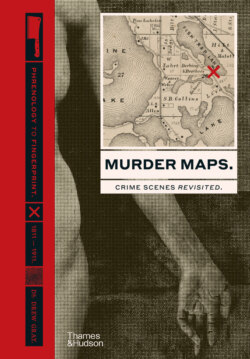Читать книгу Murder Maps - Drew Gray - Страница 40
Оглавление39ENGLAND — LONDON.
Above. the crime scene photograph taken at miller’s court, dorset street, after mary jane kelly’s eviscerated body was discovered by thomas
bowyer and john mccarthy.
Above. illustrated police news, 13 october 1888, coverage of the murder in mitre square and the thames torso murders. in 1888 human body parts were washed up
in various locations in the capital.
Above. illustrated police news, 6 october 1888, coverage of the so-called ‘double event’: the murders of liz stride and then, an hour later, catherine eddowes, which
caused widespread panic in the capital.
no regard for future trials. However, by the time of Mary Jane Kelly’s murder, the police had adopted the method suggested by pioneering French police officer Alphonse Bertillon (1853–1914), and sent a photographer to Miller’s Court to capture one of the very first ‘crime scene’ images for possible use in any court trial. The investigation was also groundbreaking for its use of criminal profiling.
In October 1888, Dr Thomas Bond (1841–1901) was asked to review the evidence and speculate on what kind of person the killer might be. He hypothesized that the Ripper was likely ‘solitary and eccentric’, ‘respectably’ dressed and susceptible to ‘homicidal and erotic mania’. Despite these advances, the police were plagued by setbacks, all of which were voraciously covered by the highly critical press.
Jack the Ripper’s identity remains a mystery; the real murderer has largely vanished as attempts to point the finger of blame at a mad doctor, a crazed immigrant or a dissolute aristocrat have created a myth from the tragic deaths of several poor East End women. •
